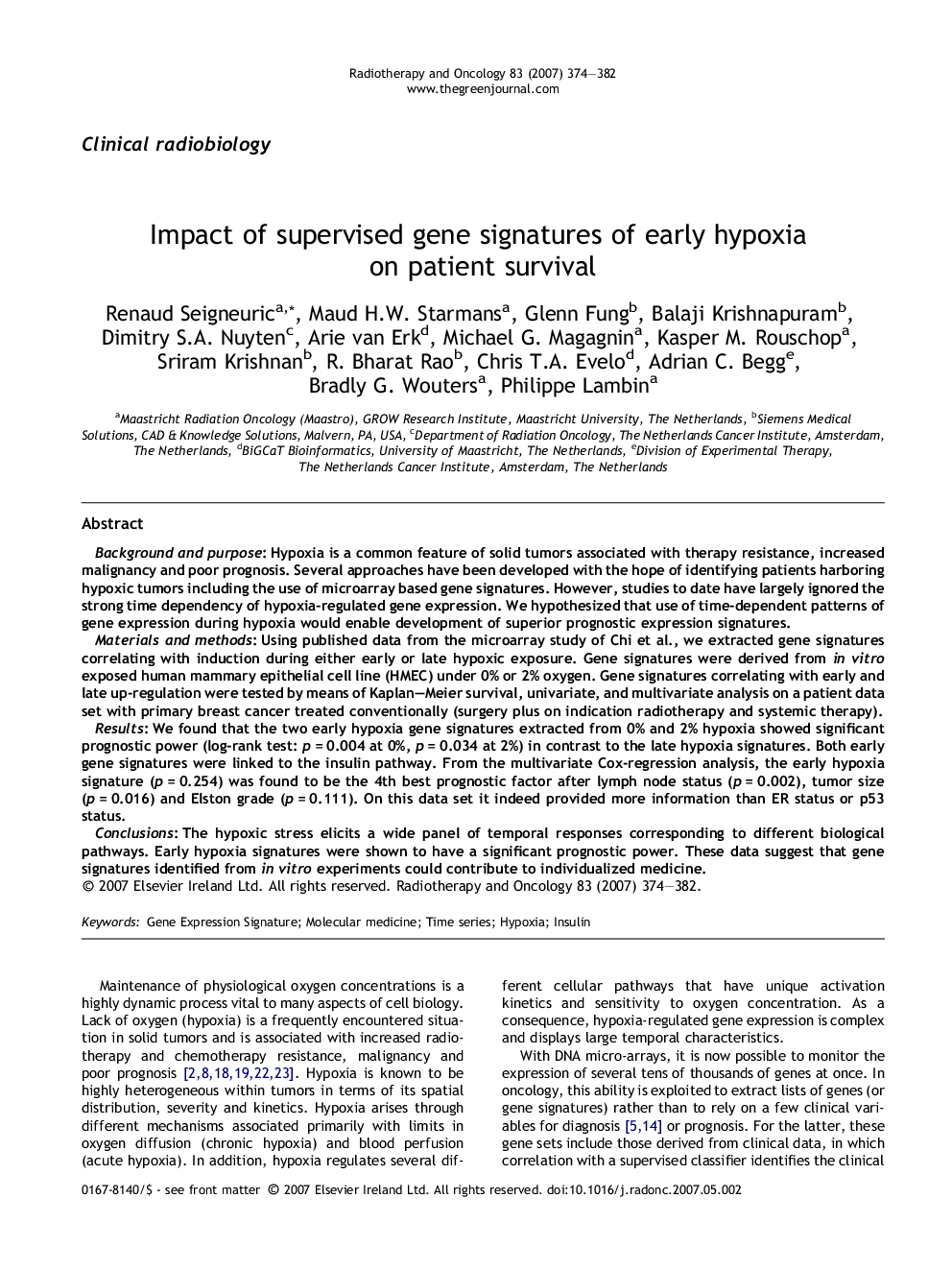| کد مقاله | کد نشریه | سال انتشار | مقاله انگلیسی | نسخه تمام متن |
|---|---|---|---|---|
| 2160937 | 1090897 | 2007 | 9 صفحه PDF | دانلود رایگان |

Background and purposeHypoxia is a common feature of solid tumors associated with therapy resistance, increased malignancy and poor prognosis. Several approaches have been developed with the hope of identifying patients harboring hypoxic tumors including the use of microarray based gene signatures. However, studies to date have largely ignored the strong time dependency of hypoxia-regulated gene expression. We hypothesized that use of time-dependent patterns of gene expression during hypoxia would enable development of superior prognostic expression signatures.Materials and methodsUsing published data from the microarray study of Chi et al., we extracted gene signatures correlating with induction during either early or late hypoxic exposure. Gene signatures were derived from in vitro exposed human mammary epithelial cell line (HMEC) under 0% or 2% oxygen. Gene signatures correlating with early and late up-regulation were tested by means of Kaplan–Meier survival, univariate, and multivariate analysis on a patient data set with primary breast cancer treated conventionally (surgery plus on indication radiotherapy and systemic therapy).ResultsWe found that the two early hypoxia gene signatures extracted from 0% and 2% hypoxia showed significant prognostic power (log-rank test: p = 0.004 at 0%, p = 0.034 at 2%) in contrast to the late hypoxia signatures. Both early gene signatures were linked to the insulin pathway. From the multivariate Cox-regression analysis, the early hypoxia signature (p = 0.254) was found to be the 4th best prognostic factor after lymph node status (p = 0.002), tumor size (p = 0.016) and Elston grade (p = 0.111). On this data set it indeed provided more information than ER status or p53 status.ConclusionsThe hypoxic stress elicits a wide panel of temporal responses corresponding to different biological pathways. Early hypoxia signatures were shown to have a significant prognostic power. These data suggest that gene signatures identified from in vitro experiments could contribute to individualized medicine.
Journal: Radiotherapy and Oncology - Volume 83, Issue 3, June 2007, Pages 374–382